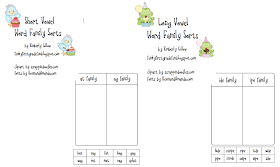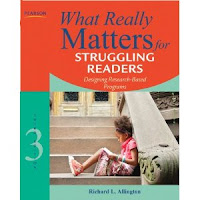Are you always looking for a way to motivate your boys to read? I was recently asked to review the book
Best Books for Boys by Pam Allyn. For the past 3 years, I worked in a split position as a first grade teacher and the Literacy Intervention Specialist in my building. I've done lots of reading about motivating struggling readers (and specifically boys).
I was hooked on Ms. Allyn's book when I read the words "we are not giving boys the books they want to read". Most of the research I've read about motivating boys to read includes tips such as giving boys "choices" of a variety reading material and making non-fiction texts more available in the classroom. Ms. Allyn's book gave me lots of new ideas that I can't wait to use in my classroom next year!
I love reading professional books that leave me with "oh-my's"! You know... "Why didn't I think of that?" and "Wow - changing that next year for sure!" and "Oh good, I knew there was a reason I did that."
Here are my oh-my's...
1.
Consider what, where and how boys read in your room - Reading this book left me with lots of new ideas for reading material for boys. Here are just a few of the ideas from the book.
What
non-fiction (I have a huge variety available to my readers.)
comic books (oops - not so much)
baseball cards (oops - great idea!)
video games/computer games (I'm honestly having a hard time selling this idea to parents/administrators and myself - but I'm thinking about ways to point out to my students how much you need to read when playing video games.)
magazines (I have some, but not nearly enough.)
sports pages (oops - another great idea!)
online resources (I let my kids play specific games, but want to "hire" a parent volunteer next year to monitor the computer area so I can have kids do more specific things there.)
poetry - (I need more poetry at the level that kids can read. Any poets out there? We need more poetry that our youngest readers can enjoy.)
Where
Ms. Allyn talks about devoting a special place to reading in your classroom.
She gives tips on everything from lighting to having boys and girls give input about what is important to them in their reading environment.
How
This book gives lots of helpful tips for how to help boys feel more comfortable with reading and to help them celebrate their reading progress. Ms. Allyn describes the importance of providing enough time for boys to read, allowing them to reread (especially struggling readers) and allowing them to see men reading as role models. She even gives tips about how to help boys who get distracted and/or highly active.
A major portion of Ms. Allyn's book is dedicated to a large list of her "Best Picks for Boys". It is a book list divided into categories that include everything from action/adventure to math/numbers. The list includes suggested titles in each category for emerging, developing and maturing readers. Each title includes a brief description of the book.
The things I'm going to change as a direct result of reading this book:
1. look for more magazines
2. "borrow" some baseball cards from around my house
3. start a boy's book club and a girl's book club in my room (and find a parent to lead each)
4. go get my puppet theater out of storage (I know my boys are motivated to read certain stories when I have puppets and props to go with them. I confess...unfortunately, I tend to close the "theater" and put caution tape around it when I boys start bonkin' each other on the head with my precious puppets.)
5. invite our male staff members and dads to be guest readers each month
6. write a grant for some comic books (which I don't really like... but it's not about me, right?)
7. reconsider the poems my kids use in their poetry books and include more poetry to motivate my boys
8. reconsider my reading environment to give my students more choices
9. make "I Can" charts with my students about our reading spaces in the classroom
If you would like to purchase your own copy of
Best Books for Boys, you can click on the image below. It's currently only $14.45 on Amazon and eligible for free super saver shipping. Check it out!
One final thought from Ms. Allyn's book (which is one that I often have when working with my struggling readers)... "do we, in our classrooms, only accept a narrow range of behaviors we deem "normal" and, therefore, suitable for school?". Hmm... something to think about while I walk the dogs on this beautiful summer day.
Now... who will be follower #300 on my blog? Happy Wednesday!







































